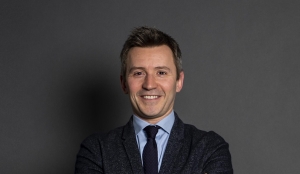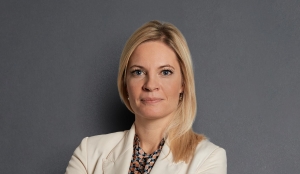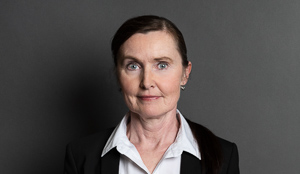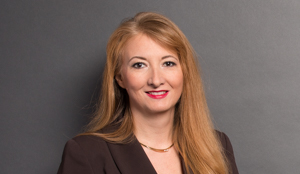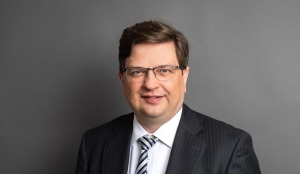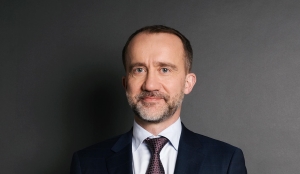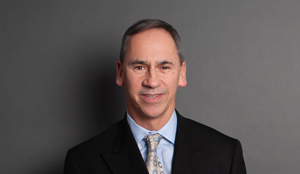EBA draft guidelines on PSD2 limited network exclusion - for consultation
On 15 July 2021, the EBA published draft guidelines on the PSD2 limited network exclusion (Article 3(k) PSD2 – LNE) – see here. The guidelines are addressed at national competent authorities (NCAs) and are meant to help them in ensuring a consistent enforcement of the LNE exclusion throughout the EU.
The guidelines are open for comments until 15 October 2021 – we strongly recommend to companies that are relying, or intend to rely, on that exclusion to review the draft guidelines in detail and consider submitting comments. In our view, the draft guidelines contain several controversial comments, as well as a number of issues, that are not clarified by the EBA’s draft.
The EBA has also organised a (remote) public hearing on 8 September 2021 which you can register for here.
Whilst we cannot summarise the entire draft guidelines, we will address the purpose of them, highlight below some of the helpful clarifications that they contain, as well as some controversial statements, and (in our view) missing items.
Why is the EBA drafting guidelines?
Article 3(k) PSD2 is typically referred to as the “limited network exclusion” (or exemption), but in fact hosts three similar, but different, exclusions from the scope of PSD2:
“services based on specific payment instruments that can be used only in a limited way, that meet one of the following conditions:
(i)instruments allowing the holder to acquire goods or services only in the premises of the issuer or within a limited network of service providers under direct commercial agreement with a professional issuer; [limited network exclusion stricto sensu]
(ii)instruments which can be used only to acquire a very limited range of goods or services; [very limited range exclusion]
(iii)instruments valid only in a single Member State provided at the request of an undertaking or a public sector entity and regulated by a national or regional public authority for specific social or tax purposes to acquire specific goods or services from suppliers having a commercial agreement with the issuer; [social or tax exclusion]”
The EBA justifies the need for the guidelines by stating that “… the implementation and application of these requirements diverges significantly between Member States, thus impeding the single market for payment services in the EU and creating opportunities for regulatory arbitrage” (paragraph 5, page 7).
This reflects our own experience at Bird & Bird: the LNE exclusion is indeed being interpreted differently by different NCAs throughout the EU, as well as in the UK which still has the same exclusion in its national payments regulations. Therefore, any attempt at harmonising the enforcement of that exclusion is welcomed – although:
- as mentioned below, we have identified some initial issues with the draft EBA guidelines
- the same issue of inconsistent enforcement also holds true in relation to other PSD2 exclusions such as the commercial agent exemption (interpreted and enforced more strictly in some EU countries), the payment systems exclusion (that has been implemented differently in the laws of different EU Member States, but also seems to be enforced differently). This begs the question whether the EBA will also prepare draft guidelines on those other PSD2 exclusions that also suffer the same issue?
Specific payment instrument
As mentioned above, the brief LNE exclusions in PSD2 (together with recital 13 and 14 PSD2 that are meant to provide more colour to Article 3(k) PSD2), as well the notification requirement that applies when the transactions with the alleged excluded payment instruments exceeds a certain threshold, raise a number of issues of interpretation and therefore legal uncertainty. The EBA has provided the below clarifications:
- “specific payment instruments” in the LNE are “payment instruments” within the meaning of Article 4(14) PSD2 (i.e. “a personalised device(s) and/or set of procedures agreed between the payment service user and the payment service provider and used in order to initiate a payment order”) (guideline 1.1).
- The specific payment instrument can be used to purchase both physical and digital goods/services (guideline 1.2 – see also paragraph 9 on page 8).
- How funds are transferred to the payment instrument is irrelevant to the assessment on whether the instrument falls, or not, within the LNE (guideline 1.3 – see also paragraph 10 on page 8).
- Specific provisions in the T&Cs regarding the use of the excluded payment instrument are not enough to benefit from the LNE. Instead, both technical and contractual restrictions are required for a payment instrument to potentially benefit from the LNE (guideline 1.4 – see also paragraph 12 on page 8), with a minimum set of technical restrictions listed in guideline 1.5.
- More than one payment instrument benefitting from the LNE can be accommodated on the same (card-based) means of payment (guideline 1.6 – see also paragraph 13 on page 9[1]). However the EBA would not allow a regulated instrument and a payment service exempted under the LNE to be combined on the same (card-based) means of payment as users may be confused as to whether or not they are protected under PSD2 when using this or that instrument (guideline 1.7 – see also paragraphs 13-14 on page 9). In other words, if a specific (perhaps card-based) means of payment contains two separate payment instruments, it is not possible for only one of them to benefit from the LNE: either both of them should benefit, or none of them will benefit.
- Redeemability of the monetary value stored on the payment instrument is not a factor in the assessment of whether the conditions for LNE are met (guideline 1.9 – see also paragraph 17 on page 9).
- Both reloadable and non-reloadable instruments can benefit from the LNE (guideline 1.10 – see also paragraph 18 on page 9).
- The exclusions stated in Article 3(k) are mutually exclusive, so cannot be applied together. Therefore, the service provider should decide which exclusion under Article 3(k) PSD2 is the leading one. Also, the LNE cannot be combined with another PSD2 exclusion (guideline 1.11 – see also paragraphs 20-21 on page 10, and paragraph 68 on pages 19-20).
- The issuer of the payment instrument can be established in a Member State different from that of the jurisdiction where the services are being provided, and therefore where a notification is made (guideline 1.12 – see also paragraph 19 on page 10).
While not addressed in the actual guidelines, the EBA clarified in the consultation document that:
- Credit may be provided in relation to transactions carried out with instruments excluded under the LNE (subject to relevant national legal requirements related to the provision of credit of course) – paragraph 11 on page 8.
- The LNE applies to the services provided, not to the service provider, pursuant to the wording of Article 3(k) PSD2 (see paragraph 15 on page 9).
- A single service provider can offer more than one instrument falling within the scope of the LNE (guideline 8 – see also paragraph 16 on page 9).
Limited network stricto sensu (Article 3(k)(i) PSD2)
Limited network of services providers
In order to determine if a network of service providers is sufficiently limited to benefit from the exclusion, the EBA has retained four defining criteria, applicable to all business models (including physical stores, online stores, or a combination of both – see guideline 2.1):
- Whether a contractual agreement exists between the issuer and the merchants for the acceptance of the excluded instrument. The EBA considers that for the criterion to be met, the direct contractual agreement will have to be concluded between the professional issuer and each individual merchant within the limited network. This is without prejudice to the possibility of delegating the conclusion of the contract to a third party acting on behalf of either the professional issuer or the individual merchants (see guideline 2.6 – see also paragraph 28 on page 12, and paragraph 38 on pages 13-14).
- Specific restrictions on the use of the instruments within a LNE to limit the growth of the networks, such as caps on the number of providers or goods and services offered. In case the limited network expands over time beyond the envisaged number, a new notification with updated information would need to be submitted to the relevant NCA(s) (paragraph 26 on page 12).
- Geographical area: the EBA considers this a flexible approach as it leaves it to the provider of an excluded service to decide on the specific geographical area for provision of goods and services, and then to indicate and justify it in the description of the activity provided with the notification under Article 37(2) of PSD2 (paragraphs 24-25 on pages 11-12).
- If a common brand is used that characterises the limited network: to ensure customer (consumer) protection, it should be clear to the customer that the service providers operates under a certain brand, preferably by having some visual manifestation (paragraph 29 on page 12).
Some additional optional indicators can be taken into account by CAs in their assessment of a specific business model (but are not defining criteria applicable to all business models) – see guideline 2.2., as well as paragraph 22 on page 11 and paragraph 34 on page 13.
Payment instruments under the LNE can only be used within a single limited network (see guideline 2.5 – see also paragraph 37 on page 12, as well as recital 13 PSD2).
While acknowledging that by default all exclusions under PSD2 should be applied in a restrictive manner, the EBA still specified in guideline 2.7 that CAs should apply the criteria and indicators under guidelines 2.1 and 2.2 in a restrictive way, i.e. that does not allow for the possibility of a specific-purpose instrument to develop into a general-purpose instrument (see paragraph 39 on page 14).
Instruments used within the premises of the issuer
In relation to “instruments allowing the holder to acquire goods or services only in the premises of the issuer”, the EBA is taking the view that the reference to “premises” sets out a geographical restriction to physical location(s). This means that payment instruments benefitting from this exclusion can only be used for purchases within physical locations and cannot be used for purchases in online stores (see guideline 3 – as well as paragraph 40 on page 14).
This is arguably taking a restrictive interpretation of the word “premises”. Granted the EBA cannot amend the wording of PSD2 nor the national legislations implementing it (it is merely issuing non-binding interpretative guidance to NCAs), but this interpretation has the potential to create a discrimination between brick-and-mortar stores and online stores.
Very limited range of goods and services (Article 3(k)(ii) PSD2)
Recital 13 PSD2 refers to “functionality connected goods and services”. The EBA therefore focuses in its draft guidelines on the identification of a relationship between a leading product/service and connected goods and/or services (see guidelines 4.1 to 4.3 included – see also paragraph 46 on page 15).
It also provides additional indicators in guideline 4.4, which are identical to the additional indicators in guideline 2.2 (see above) except for the “size of the geographical area for provision of goods and services” indicator which has been removed.
The EBA indicates again that the requirements of guideline 4 should be applied by CAs in a restrictive way that does not allow for the possibility a specific-purpose instrument to develop into a general-purpose instrument and thus falling outside the scope of the LNE (paragraph 49 on page 16).
Provision of services under LNE by regulated entities
Not only unregulated players can benefit from the LNE, but also regulated players (e.g. banks, payment institutions, e-money institutions) can benefit from the LNE exclusion in relation to some of their services (see guideline 5.1). However those regulated players should ensure a proper delineation between their regulated and non-regulated services so that PSUs, in particular consumers, are aware that they do not benefit from the protections PSD2 provides to regulated services (e.g. different brands, perhaps separate legal entities – guidelines 5.2 and 5.3, as well as paragraphs 50-53 on pages 16-17).
Notification requirements
Regarding the notification requirements:
- The thresholds should be calculated at the level of each Member State (guideline 6.1 – see also paragraph 56 on page 17). Therefore, the respective payment instrument should be notified to, and assessed by, the respective CA(s) where the services are provided individually and where the thresholds set out in Article 37(2) of PSD2 have been exceeded (guideline 6.1 – see also paragraph 57 on page 18).
- There are no regulatory obstacles to the provision of cross-border services based on an instrument excluded under Article 3(k)(i) or (ii) of PSD2. However, since these are services excluded from the application of PSD2, the service providers cannot benefit from passporting rights and subsequently cannot be passported in another Member States based on an assessment carried out by the CA of the ‘home’ Member State where the provider is carrying out its activity (guideline 6.1 – see also paragraph 55 on page 17). Although as a practical matter, it would be obviously problematic to the concept of single market if we saw two or more NCAs reach contradicting conclusions in relation to the same services. Therefore, while not required by the EBA (see paragraph 59 on page 18), one can only hope that CAs will coordinate in order to reach a consistent view.
- For the information to be included in the notification, see guidelines 6.2 and 6.3 (see also paragraph 58 page 18).
- The notification should be submitted only once (i.e. no need for annual resubmission which is a practice that had developed in some EU Member States such as Italy and France) (guideline 6.4 – see also paragraph 63 on page 19). A new notification is only required if the information provided in the original notification changed substantially or if another specific payment instrument is envisaged – see guideline 6.5 for factors that may constitute a significant change.
- “the calculation of the thresholds … is to be carried out at the level of each service provider” (guideline 6.7), meaning that while a single provider can benefit from the LNE exclusion in relation to several services (see guideline 1.8, as well as paragraph 16 on page 9 and paragraph 61 on page 18), the value of the transactions made across those separate specific payment instrument should be added in order to determine if the notification threshold is reached or not (i.e. each specific payment instrument does not benefit from a separate “counter”) – see guideline 6.7. This is potentially controversial and no doubt will give rise to comments. Also, this approach seems to somewhat contradict the statement made by the EBA in point 15 on page 9 that, pursuant to the wording of Article 3(k) PSD2, the LNE applies to the services provided, not to the service provider?
Article 3(k)(iii)
The EBA did not find merit in providing more clarity on the exclusion under Article 3(k)(iii) of PSD2 since the specific aspects on the use of the instrument, including its funding, are specified in the respective national social or tax law (paragraph 69 on page 20). The EBA merely stated that “Competent authorities should not require the instruments falling in the scope of Article 3(k)(iii) of PSD2 to fulfil the requirements of Guidelines 2 and 4 that apply to the limited network of service providers and the limited range of goods and services” (guideline 7.1).
One fundamental issue yet to be clarified
In our view, there are a few important issues that the EBA does not address in its draft guidelines. One of them is a pretty fundamental one: although the EBA does not to say this explicitly in the draft (despite the few references to “issuer” throughout), it seems that the EBA’s position is that only the payer’s PSP, as the issuer of specific payment instrument, can benefit from the LNE (see e.g. paragraph 4 on page 7 referring to “Payment instruments covered by the limited network exclusion could include store cards, fuel cards, membership cards, public transport cards, parking ticketing, meal vouchers …”, although it does say “and others”). Assuming this is indeed the EBA’s position, in our view this is respectfully incorrect – and does not reflect the practice of NCAs to date:
- As mentioned above, the EBA confirms in its draft guidelines that the term “payment instrument” in the LNE should have the same meaning as “payment instrument” in Article 4(14) PSD2 (see paragraphs 7-8 on pages 7-8) – which makes sense.
- In our view, a payee’s PSP can also provide services which meet the conditions of the LNE exclusion. For example, in relation to regular open loop cards such as regular Visa or Mastercard cards, someone performing the role of an acquirer or a sub-acquirer (typically referred to as “payment facilitator” or “payfac”) should be able to benefit from the LNE exclusion if it allows the merchant or sub-merchant to get paid only in relation to “a very limited range of goods or services” (Article 3(k)(ii)), or if it only allows the merchant/sub-merchant “within a limited network of service providers under direct commercial agreement with a professional issuer” to accept payments (Article 3(k)(i)). PSD2 defines a “payment instrument” in particular as a “… set of procedures agreed between the payment service user [i.e. in our example, the merchant or sub-merchant] and the payment service provider [i.e. in our example, the acquirer or payfac] and used in order to initiate a payment order” (Article 4(14) PSD2). If the acquirer/payfac offers services to merchants based on such a ‘set of procedures’ agreed with its (sub-)merchants, it seems to us that the payee’s PSP should be able to benefit from the LNE (assuming that the conditions are met of course).
- In our experience, and based on the publications made by various NCAs on their websites in relation to constructs where they have allowed reliance on the LNE, there are a number of precedents where NCAs have agreed that a payee’s PSP could benefit from the LNE.
It would be helpful for the EBA to expressly confirm this point in the final version of its guidelines.
Next steps
As mentioned above, the EBA will hold a hearing on 8 September, and the consultation is open until 15 October.
The guidelines are meant to become applicable on 1 October 2022. Companies that have submitted a notification to a NCA in relation to the LNE should be requested by NCAs to resubmit their notification taking into account the provisions of these EBA guidelines.
If you would like to receive our regular Payments alerts in your inbox, click here.
If you would like to read Bird & Bird’s previous alerts, please check out our Payments In Focus webpage here.
[1] See our alert on the DenizBank judgment here where the ECJ took the view that a contactless card contains two separate payment instruments.

